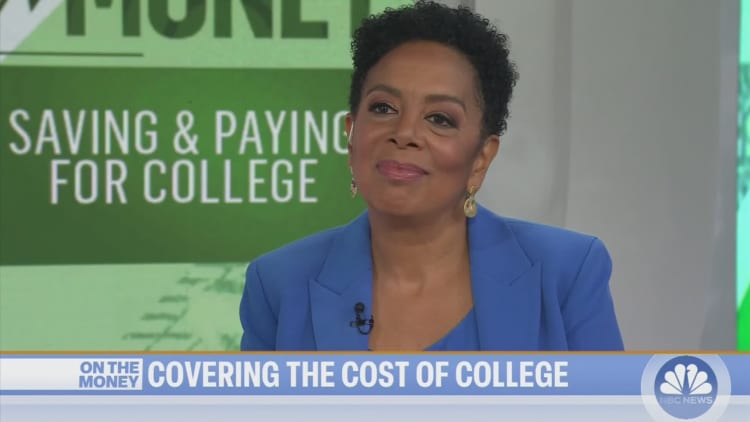5 groups of borrowers who could still get student loan forgiveness

President Joe Biden is joined by Education Secretary Miguel Cardona as he announces new actions to protect borrowers after the Supreme Court struck down his student loan forgiveness plan, in the Roosevelt Room at the White House in Washington, D.C., on June 30, 2023.
Chip Somodevilla | Getty
Nearly 40 million Americans stood to benefit from President Joe Biden’s original student loan forgiveness plan, which the Supreme Court ultimately blocked over the summer.
Though the Biden administration is now trying to cancel education debt another way, experts have warned that borrowers should temper their expectations. Given the legal challenges of passing sweeping debt forgiveness, they say the president’s Plan B for relief is likely to be narrower in its reach.
“A much smaller number of borrowers will be eligible,” said higher education expert Mark Kantrowitz.
More from Personal Finance:
Workers rights amid a ‘summer of strikes’
Couples leverage ‘something borrowed’ to cut wedding costs
‘Soft landing, no recession,’ Bank of America predicts
Indeed, Kantrowitz estimates that less than 10% of federal student loan borrowers will qualify this round. Under the president’s first plan, rolled out in August 2022, more than 90% of borrowers would have seen their balances cleared or reduced. The plan only excluded those who earned above $125,000 as individuals or married couples making more than $250,000.
The U.S. Department of Education did not immediately respond to CNBC’s request for comment.
Consumer advocates have criticized the Biden administration for scaling back its plans and are pressuring him to take on his legal opponents and still try to go big with debt cancellation. On the campaign trail, Biden promised to cancel at least $10,000 of student debt per person.
“Anything less than what Biden promised will be felt as a letdown, even a betrayal,” said Astra Taylor, co-founder of the Debt Collective, a union for debtors, in a previous interview with CNBC.

For now, the administration seems focused on delivering relief to five specific groups of borrowers, according to a recent paper issued by the U.S. Department of Education.
1. Borrowers with balances greater than what they originally borrowed
The Education Department says it will focus on borrowers who have seen their balances only grow due to the accrual of unpaid interest.
CNBC has written about people who have seen their debt double or even triple because they have needed to put their debts into forbearance or have been billed amounts that don’t even fully cover their interest.
2. Those who have been paying for decades
The Education Department is looking at providing relief to borrowers who “entered repayment many years ago.”
While it is unclear how many people fit into this category, about 2.7 million borrowers age 62 and older currently owe around $115 billion in student debt, Kantrowitz said.
3. People who attended programs of questionable value
Borrowers who attended programs that did not “provide a minimum level of financial value” will be another group considered for relief.
Under Biden, the Education Department has already made students of for-profit colleges, which have come under scrutiny for misleading borrowers about their programs, a priority. It has forgiven about $22 billion in student debt for such people.
4. Borrowers eligible for relief but who haven’t applied
5. Debtors in financial hardship
Lastly, as the Education Department revises its forgiveness plan in a way that it hopes will be met with less of a legal backlash, it’ll look to address borrowers who are experiencing financial hardships that the current loan system might not account for.
Even before the Covid-19 pandemic, when the U.S. economy was enjoying one of its healthiest periods in history, problems plagued the federal student loan system.
Only about half of borrowers were in repayment in 2019, according to an estimate by Kantrowitz. About 25% of borrowers — or more than 10 million people — were in delinquency or default, and the rest had applied for temporary relief for struggling borrowers, including deferments or forbearances.
These grim figures led to comparisons to the 2008 mortgage crisis.
Don’t miss these CNBC PRO stories:





